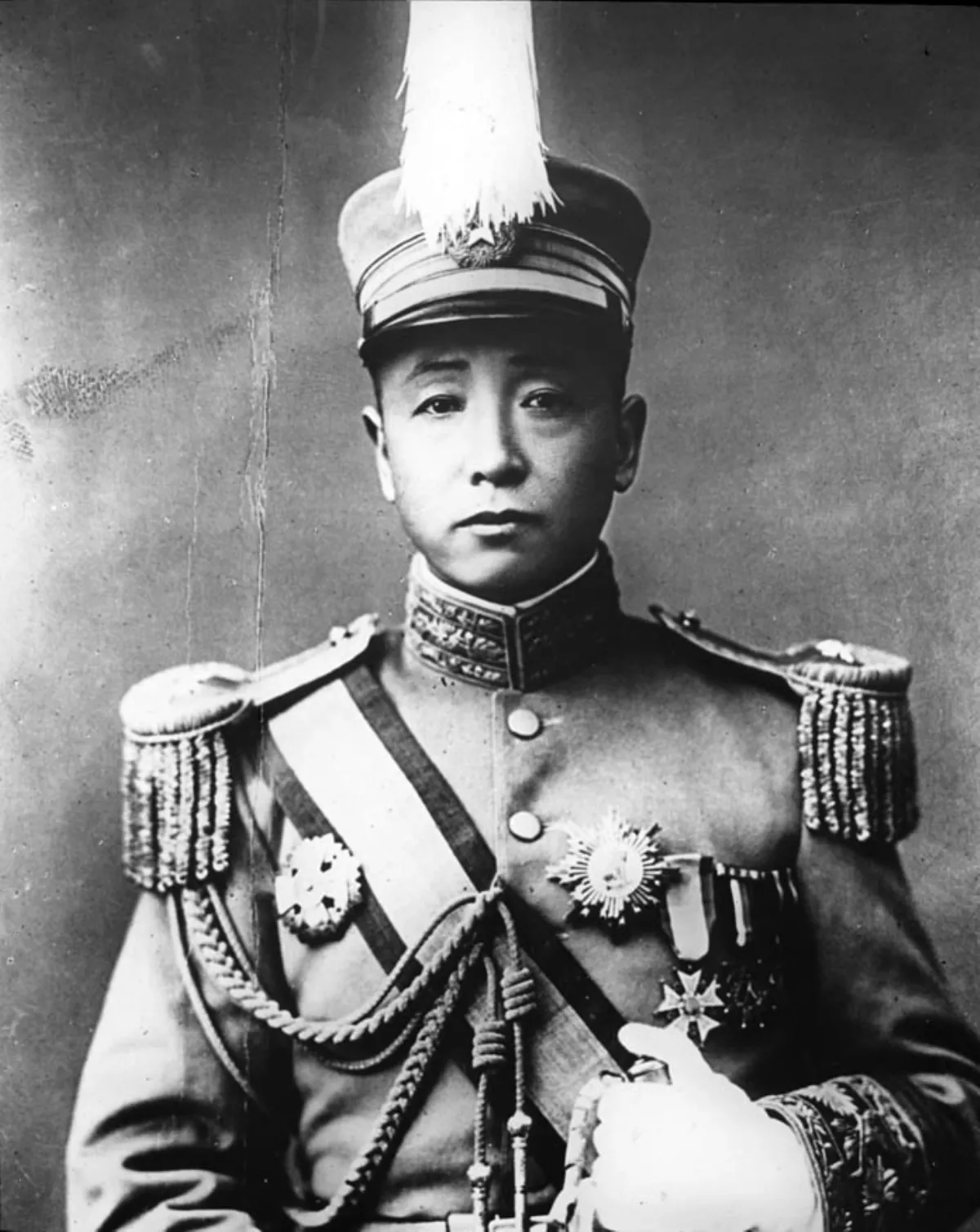 1.
1. Zhang Zuolin was a Chinese warlord who ruled Manchuria from 1916 to 1928 and led the Fengtian clique, one of the most powerful factions during the Warlord Era.

 1.
1. Zhang Zuolin was a Chinese warlord who ruled Manchuria from 1916 to 1928 and led the Fengtian clique, one of the most powerful factions during the Warlord Era.
Zhang Zuolin founded the Fengtian clique and gradually expanded his Northeastern Army, which established his supremacy over the three northeastern provinces.
Zhang Zuolin was supported by the Japanese, who viewed him as best representing their economic interests.
Zhang Zuolin's troops were defeated by the Kuomintang's Northern Expedition in 1928.
Zhang Zuolin was succeeded in Manchuria by his son, Zhang Xueliang, who recognized the Nationalist government.
Zhang Zuolin was born in 1875 in Haicheng, a county in southern Fengtian province in northeastern China, to poor parents.
Zhang Zuolin received little formal education, and the only non-military trade that he learned in his lifetime was a small amount of veterinary science.
Zhang Zuolin's grandfather had come to the northeast after fleeing a famine in Zhili in 1821.
Zhang Zuolin hunted hares in the Manchurian countryside to help feed his family.
In 1900 the Boxer Rebellion broke out, and Zhang Zuolin's gang joined the imperial army.
Zhang Zuolin then murdered a number of leading figures in his base city of Shenyang, and was rewarded with a series of impressive-sounding titles by the nearly defunct Qing court.
In 1915, when it became clear that Yuan intended to declare himself emperor, Zhang Zuolin was one of the few officials who supported him.
Besides political opportunism, Zhang Zuolin saw Yuan as a central, unifying, and legitimate figure.
In March 1916, after many southern provinces revolted against Yuan Shikai's government, Zhang Zuolin supported him but expelled a local military governor sent by Duan Qirui to replace him, with some support from local Japanese officers in the Kwantung Army.
Zhang Zuolin sought good relations with Puyi in order to increase his power and cement his legitimacy if a restoration was ever attempted.
Zhang Zuolin proposed talking to the National Assembly about a possible restoration.
Zhang Zuolin was able to absorb soldiers of nearby commanders who had been linked to the rebellion, increasing his own power.
Zhang Zuolin intervened and took control of China's northernmost province, Heilongjiang, after a rebellion there forced the local governor to flee.
Zhang Zuolin began to surround himself in luxury, building a chateau-style home near Shenyang, and had at least five wives.
Zhang Zuolin's power rested on the Fengtian Army, which was composed of about 100,000 men in 1922 and almost triple that number by the end of the decade.
Zhang Zuolin integrated a large number of local militias into his army, and thus prevented Manchuria from falling into the chaos which reigned in China proper at the time.
Jilin province was ruled by a military governor, who was said to be a cousin of Zhang Zuolin; Heilongjiang had its own regional warlord, who never displayed any ambitions outside the province.
Only postal and customs revenues continued to be sent to Beijing, because they had been pledged to the victorious foreign powers after the failed Boxer Rebellion of 1900, and Zhang Zuolin feared their intervention.
Still, Zhang Zuolin avoided a showdown and after 1924 the Soviets re-established their dominance over the railroad.
Lu Zhankui, a Mongol officer under Zhang Zuolin, was instrumental in bringing Oomoto leader Onisaburo Deguchi, and Aikido founder Morihei Ueshiba, to Mongolia in 1924.
At the beginning of the 1920s, Zhang Zuolin transformed Manchuria from an unimportant frontier region to one of the most prosperous parts of China.
Zhang Zuolin chose Wang Yongjiang, who had served as head of a regional tax office, for the task of solving Fengtian's financial problems.
Zhang Zuolin was appointed director of the bureau of finance.
Zhang Zuolin retained the title of Military Governor of Fengtian.
In 1919 France had left Renault FT tanks in Vladivostok after the joint Allied intervention, and Zhang Zuolin soon incorporated them into the Manchurian Army.
Zhang Zuolin did this by supporting another warlord, Cao Kun, with troops and they successfully ousted Duan.
In December 1921, Zhang Zuolin visited Beijing; at his request, the entire cabinet, led by Jin Yunpeng, resigned, leaving him free to appoint a new government.
Three-thousand troops had been killed and 7,000 wounded, and Zhang Zuolin's units retreated to Shanhai Pass.
Zhang Zuolin gave in, lifted martial law and agreed to a separation of civil and military administration in all of the three provinces.
Zhang Zuolin tried to bring more workers into the booming Manchurian economy.
Zhang Zuolin saw an opportunity to capture North China and Beijing and become head of the central government.
Zhang Zuolin shared power with Zhang, and both appointed the same Duan Qirui whom he had ousted in 1920.
Zhang Zuolin purchased 14 more FT tanks in 1924 and 1925 for the army, and they were used in the battles.
Zhang Zuolin demanded that more paper money be printed, out of step with silver reserves.
Zhang Zuolin issued new provincial bonds and forced businesses and local communities to purchase them.
In June 1926, Zhang Zuolin managed to capture Beijing, and rumors swirled that he was planning to proclaim himself emperor.
In what came to be known as the Huanggutun incident, Colonel Komoto Daisaku, an officer of the Japanese Kwantung Army, planted a bomb along a railroad bridge, which exploded when Zhang Zuolin's train passed it.
At the Tokyo War Crimes Tribunal in 1946, Okada Keisuke testified that Zhang Zuolin was murdered because the Kwantung Army was infuriated by his failure to stop Chiang's army, which was backed by Moscow, Tokyo's strategic rival.
For two weeks, Zhang Zuolin's death was kept secret while the scramble for power was decided.